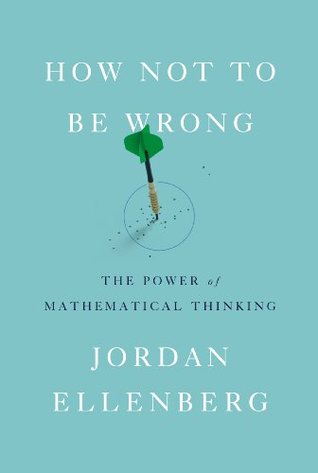More on this book
Community
Kindle Notes & Highlights
That is, it doesn’t try to tell you something false—rather, it tells you something true from which you’re likely to draw incorrect conclusions.
improbable things happen a lot.
Wiggle room is what the Baltimore stockbroker has when he gives himself plenty of chances to win; wiggle room is what the mutual fund company has when it decides which of its secretly incubating funds are winners and which are trash. Wiggle room is what McKay and Bar-Natan used to work up a list of rabbinical names that jibed well with War and Peace. When you’re trying to draw reliable inferences from improbable events, wiggle room is the enemy.
Given enough chances, finding codes is a cinch.
If a random Internet stranger who eliminated all North American grains from his food intake reports that he dropped fifteen pounds and his eczema went away, you shouldn’t take that as powerful evidence in favor of the maize-free plan. Somebody’s selling a book about that plan, and thousands of people bought that book and tried it, and the odds are very good that, by chance alone, one among them will experience some weight loss and clear skin the next week. And that’s the guy who’s going to log in as saygoodbye2corn452 and post his excited testimonial, while the people for whom the diet failed
...more
ubiquity of the improbable.
the quadratic term is negative just because gravity pushes missiles down, not up.
In practice, though, it doesn’t help you to time the impact to the millionth of a second, does it?
And geometric intuition demands that if such a parabola noses its way above the x-axis at all, it must strike the x-axis in exactly two places, no more, no fewer. In other words, there are two values of x such that 100 + 200x − 5x2= 0.
It’s hard to license talking about these things in the same language we use to assess the outcomes of coin flips and dice rolls.
Improbability, as described here, is a relative notion, not an absolute one; when we say an outcome is improbable, we are always saying, explicitly or not, that it is improbable under some set of hypotheses we’ve made about the underlying mechanisms of the world.
The “does nothing” scenario is called the null hypothesis.
null hypothesis significance test,
It’s not enough that the data be consistent with your theory; they have to be inconsistent with the negation of your theory,
If I claim I can make the sun come up with my mind, and it does, you shouldn’t be impressed by my powers; but if I claim I can make the sun not come up, and it doesn’t, then I’ve demonstrated an outcome very unlikely under the null hypothesis, and you’d best take notice.
there’s a tradition, which started with Fisher himself and is now widely adhered to, of taking p= 0.05, or 1/20, to be the threshold.
But the significance test that scientists use doesn’t measure importance.
twice a tiny number is a tiny number.
Risk ratios are much easier for the brain to grasp than tiny splinters of probability like 1 in 7,000. But risk ratios applied to small probabilities can easily mislead you.
Just because we can detect them doesn’t always mean they matter.
For Skinner, aiming to knock literary criticism off its plinth, the null hypothesis was the attractive one.
Shakespeare’s writing is rich in effect, but always restrained. He would never pack in so much cabbage that Skinner’s crude test could smell it. A statistical study that’s not refined enough to detect a phenomenon of the expected size is called underpowered—the equivalent of looking at the planets with binoculars.
The significance test asks us to address the following question: if the null hypothesis were correct and there were no hot hand, would we be unlikely to see the results that were actually observed?
So players really do have “hot spells” of a rather predictable kind: namely, they’re more likely to hit a shot when they’re playing the Cavs. But this mild heat—maybe we should call it “the warm hand”—is something the tests used by Gilovich, Vallone, and Tversky aren’t sensitive enough to feel.
Assuming the truth of something we quietly believe to be false is a time-honored method of argument that goes all the way back to Aristotle; it is the proof by contradiction, or reductio ad absurdum.


